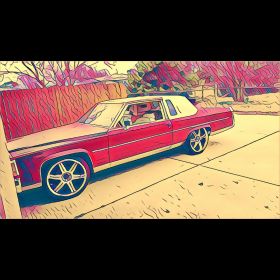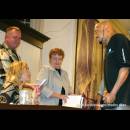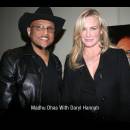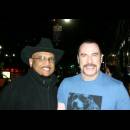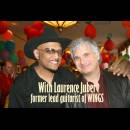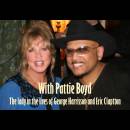Listen to Madooo again #1 in USA - Week 49, on NiM charts' Psychedelic Rock! http://www.numberonemusic.com/charts?song_id=645355&genre_id=49&geo=national&country_id=225&state_id=0&pos=1&songs_total=149&page=1
”Norwegian Wood (This Bird Has Flown)" by the Beatles covered by Madooo (Madhu) with a unique blend of Eastern strains & Psychedelic Raga Rock, re-arranged and performed by him. SHARE with friends and family, if you like it.
A brief history: The song was written by the songwriting partnership of John Lennon and Paul McCartney and was first released on the album Rubber Soul on 3 December 1965. Musically influenced by the introspective lyrics of Bob Dylan, "Norwegian Wood" is considered a milestone in the Beatles' progression as complex songwriters. In addition, the recordings of studio musicians during the Help! filming sessions, and Ravi Shankar inspired lead guitarist George Harrison to incorporate the sitar into the song.
Although "Norwegian Wood" was not the first song to feature an Eastern-inspired sound in a rock composition, nor is it even the first Beatles track to do so, it is credited as influential in the development in raga rock and psychedelic rock. Not long afterwards, Indian classical music became popularised in mainstream Western society, and several Western musical artists such as the Byrds, the Rolling Stones, and Donovan integrated elements of the genre into their musical approach. Accordingly, "Norwegian Wood" is recognised as a bona fide raga-rock song, as well as fundamental in the early evolution of the genre later regarded as world music.
The song's lyrics are about an extramarital affair that John Lennon was involved in, as hinted in the opening couplet: "I once had a girl, or should I say, she once had me". Though Lennon never revealed whom he had an affair with, writer Philip Norman speculates that it was either close friend and journalist Maureen Cleave, or Sonny Freeman. Paul McCartney explained that the term "Norwegian Wood" was a sarcastic reference to the cheap pine wall panelling then in vogue ((expired link). in guitarist Peter Asher's bedroom). McCartney commented on the final verse of the song: "In our world the guy had to have some sort of revenge. It could have meant I lit a fire to keep myself warm, and wasn't the decor of her house wonderful? But it didn't, it meant I burned the fucking place down as an act of revenge, and then we left it there and went into the instrumental."
According to Lennon, the lyrics were primarily his creation, with the middle eight being credited to McCartney. In 1980, Lennon changed his claim, saying it was "my song completely". Since Lennon's death, however, McCartney has contended that Lennon brought the opening couplet to one of their joint songwriting sessions, and that they finished the song together, with the middle eight and the title (and the "fire") being among McCartney's contributions. Regardless, it was Lennon who began writing the song in February 1965, while on holiday with his wife, Cynthia, and record producer George Martin at St. Moritz in the Swiss Alps. Over the following days, Lennon expanded on an acoustic arrangement of the song, which was written in a Dylanesque time signature, and showed it to Martin while he recovered from a skiing injury. In his book The Songs of Lennon: The Beatle Years, author John Stevens describes "Norwegian Wood" as a turning point in folk-style ballads, writing "Lennon moves quickly from one lyrical image to another, leaving it up to the listener's imagination to complete the picture". He also said the song marked a pivotal moment in Lennon's use of surreal lyrics, following on from the earlier songs "Ask Me Why" and "There's a Place".
Between 5 April and 6 April 1965, while filming the second Beatles movie, Help!, at Twickenham Film Studios, George Harrison first encountered the sitar, a prominent feature in "Norwegian Wood". A group of Indian session musicians sparked Harrison's interest when they performed the instrumental "Another Hard Day's Night", a medley of three Beatles compositions – "A Hard Day's Night", "Can't Buy Me Love" and "I Should Have Known Better" – arranged to feature the sitar, among other instruments. It was not the first instance in which Indian influence was evident in a Western composition: the raga-like drone was found in the Beatles' "Ticket to Ride", as well as in the Kinks' rare foray into psychedelic rock with their song "See My Friends". The Yardbirds also created a similar sound with a distorted electric guitar on their recording of "Heart Full of Soul". On 25 August 1965, during the Beatles' American tour, Harrison's friend David Crosby of the Byrds discussed in detail his thoughts about Indian classical music, and the work of sitar virtuoso Ravi Shankar. Once back in London, Harrison followed Crosby's suggestion by seeking out Shankar's recordings. He also purchased a cheap sitar, from the Indiacraft store on Oxford Street.
Harrison shared his enthusiasm with the other Beatles, and felt that, overall, his bandmates "were growing very quickly and there were a lot of influences". While McCartney later admitted that he found Indian music "boring", Lennon was intrigued by the genre's mystical qualities, although he possessed a disdain for any formal method or training. Lennon was simply intrigued with the sound of the sitar and was open to the possibilities that the instrument had to offer. Harrison introduced drummer Ringo Starr to the tabla, an Indian hand drum. Starr was completely mystified and refused to learn how to play it; Harrison recalled it was "so far out to him".
Read more
















